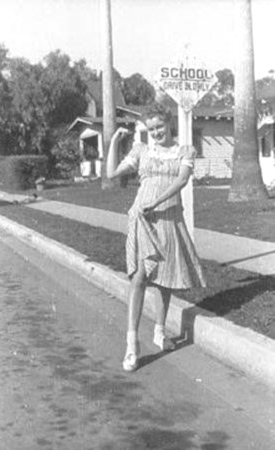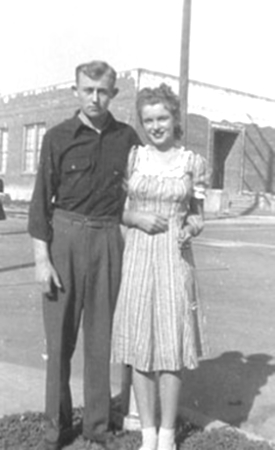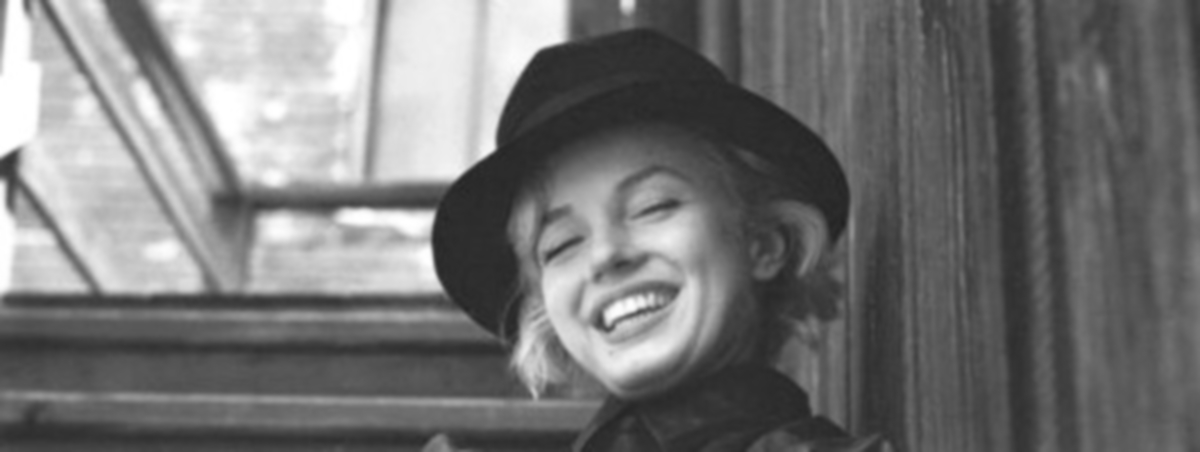Norma Jeane Mortenson
1926 Thru 1940
An Uncelebrated Arrival

Gladys Pearl Mortensen, a petite and attractive, ginger headed woman, celebrated her twenty-fourth birthday on the 27th of May in 1926. At the time, she was nine months pregnant and the delivery of her infant was upon her. Like most women in her condition, she was, no doubt, ready to rid herself of her protuberant midsection, ready for her body to return to a state of normalcy, as it had twice before after delivering her first two children. Even though she struggled to sit, to stand, to walk, struggled with a constant urge to pee, Gladys Pearl endured her modest birthday celebration among a few friends and relatives; and she endured the four days following thereafter. Finally, on Tuesday, June the 1st, her water broke.
During a morning indistinguishable from all the other June mornings that had come and gone over the years in Southern California, sunny and warm, fragrant and soft, like several other indigent women who delivered in the charity ward of Los Angeles County Hospital that morning, Gladys delivered her third child and her second daughter, a healthy and lovely baby girl. Since Gladys Pearl was neither royalty nor a movie star, and she wasn’t a politician, the birth of her daughter in that charity ward went virtually unnoticed. Only a few humans were aware of the infant’s uncelebrated arrival. Neither parades nor marching bands memorialized the birth. Pyrotechnic displays did not signal the arrival of the child Gladys Pearl named Norma Jeane.
At the time of Norma Jeane’s delivery, Gladys Pearl was separated from Martin Edward, her second husband. Her first marriage to John Newton Baker on May the 17th in 1917, at the incredibly young age of fourteen (she turned fifteen on May the 27th), produced two children, Berniece and Jackie. By all accounts, her marriage to Baker was not a happy one, so Gladys filed for divorce in 1921. The dissolution of that marriage was finalized in 1923. Soon thereafter, John kidnapped his two children and returned to his native state of Kentucky: he believed that Gladys’ roaring twenties flapper lifestyle made her an unfit mother. To be near her children, Gladys followed John to the Blue Grass State: she hoped to regain custody of Berniece and Jackie and eventually return with them to California. While in Kentucky, she took a position as a nanny with the Cohen family and cared for their young daughter.
Gladys’ position with the Cohens allowed her to observe Berniece and Jackie unnoticed from a distance. When she finally approached John and his family, the Bakers told Gladys in clear terms that she would never acquire custody of her children. Gladys realized that they were happy and living a bucolic life, one that she could not provide for them in California. She returned to the household of Harry and Lena Cohen and continued to work as their nanny. Soon, Gladys began to exhibit odd behavior; so the Cohens had no other option: they dismissed her. Heartbroken, Gladys accepted that her dream of reuniting with her children would remain unrealized, so she returned to California alone, moved on with her life and married the responsible but sedate Mortensen in late 1924. Citing boredom as her reason, she left Martin Edward after only four months of marriage. Ten months elapsed. Relationships with a few men developed and ended. One of those relationships produced her third pregnancy. To avoid the stigma of an illegitimate birth, Gladys gave her newborn the surname of her estranged husband but misspelled it on the birth certificate as “Mortenson”. Later, Gladys baptized the infant Norma Jeane Baker. Most biographers contend that Charles Stanley Gifford, Gladys’ co-worker, and briefly her lover in 1925, was Norma Jeane’s father; but her paternity is still debated to this day. Donald Spoto, in his 1993 Marilyn biography, cited three men as potential candidates: Harold Rooney, Clayton McNamara and Raymond Gutherie. Donald favors Mr. Gutherie as the most likely candidate; but in truth, no one really knows who fathered Norma Jeane (Spoto 13). The mystery of her paternity is just one of many that would add to the allure and the charm of the indelible persona Norma Jeane created, the persona by which she, and virtually the entire planet, became consumed: Marilyn Monroe.
The privations of Norma’s nearly motherless and fatherless childhood have been well documented by the plethora of authors who have written the hundreds of books, biographies and fictions, about Norma, the child, and Marilyn, the woman. There is little if any reason to recount all those sad stories here. Suffice it to say, Norma’s childhood was less than idyllic, far less than perfect. Within two weeks of the infant’s birth, Gladys delivered Norma into foster care and custody of Ida Bolender and the Bolender family, the first in a series of foster families, along with actual family members and friends, who housed and cared for Norma Jeane. Even though Gladys tried to provide a stable home and a life that included the love of a mother, circumstances beyond her control conspired against her. She lost her job and then she received news from Kentucky that the injuries Jackie received in an accident proved fatal. Due to this profound loss and the stress of being a single mother, her mind frayed and she withdrew from reality. She became too unstable to be a suitable parent. In Marilyn’s unfinished autobiography, My Story, she recalled her mother’s mental breakdown and collapse. As a child of eight years, Marilyn watched while men dressed in white restrained her mother. Gladys alternately screamed and laughed throughout the ordeal. Initially Gladys was taken to Los Angeles General Hospital. From there she was transferred to Santa Monica Rest Home, where she lived briefly. She was eventually returned to the LA hospital but finally transferred to Norwalk State Hospital. While there, she was diagnosed with schizophrenia, paranoid type. In March of 1938, following an escape attempt, the authorities transferred her to the Agnew State Asylum in San Jose, putatively the first modern mental health hospital in California. After her mother’s psychotic episode, eight-year-old Norma was delivered into the custody of Gladys’ close friend and former coworker, Grace McKee.
A childless but otherwise maternal woman, Grace loved Norma Jeane as if the little girl was the daughter she could not create for herself. Even though Grace did not have legal custody of Norma at the time, she was her de facto guardian, a major influence on the eight-year-old and a constant presence in Norma’s world while the Atkinsons, the Giffens, and even briefly Grace’s mother, along with several other foster folks, housed the child. A lover of movies and movie stars, particularly Jean Harlow, Grace planted an important seed in young Norma’s fertile mind. Grace told Norma constantly that her destiny awaited among the stars, that she was destined to become the next beautiful, platinum-haired Jean Harlow. Grace advised Norma Jeane not to worry; Grace sensed, even felt in her skeleton, that Norma was going to grow up to be a beautiful woman. During Grace’s tenure at RKO Pictures, where she had worked with Gladys Pearl, she learned how Hollywood created its illusions and fantasies, the perfect, the beautiful women who educed desire in men; and little Norma was the recipient of Grace’s expertise and experience. If ever a child was being prepared for stardom, it was Norma Jeane.


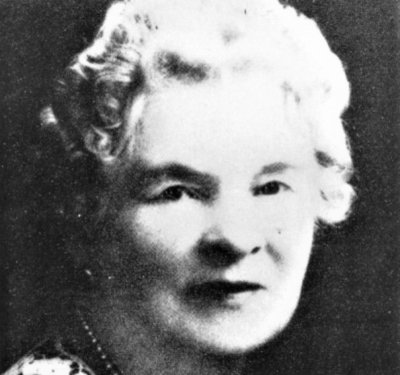
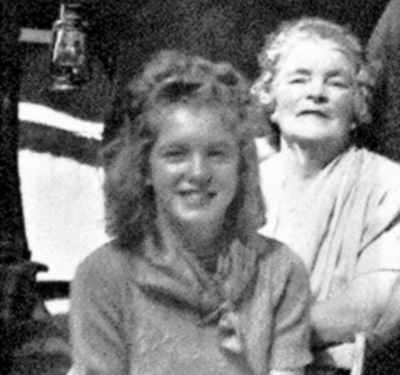
In My Story, Marilyn recounted two consequential events that occurred during late 1934 and mid 1935. The initial event involved first love, her innocent, sexual curiosity and her lonely struggle to understand and differentiate between lust and love. She revealed that she fell in love for the first time with an older man when she was a girl of eight. He was a year older than she, a fellow named George. They often sought the high grass to conceal the activities and behavior that Norma Jeane concluded must be wrong: otherwise, she and George would not have concealed themselves. What she and George did while they were hiding among the weeds did not frighten Norma, but such was not the case with George who got frightened and jumped up and ran away. Unsure why George had become frightened and not sure why their innocent curiosity and exploration was wrong, her confusion kept her awake at night as she tried to figure out what sex was and what love was. I wanted to ask a thousand questions, but there was no one to ask (Monroe 17).
The second event also involved sex but not with a frightened and equally innocent boy. As she neared her ninth birthday, she was molested by a man she called Mr. Kimmel, a man who boarded with her foster family at the time. While passing the open door to his room one day Mr. Kimmel asked her to enter. She was not afraid of the man so she complied. Once she was in Mr. Kimmel’s room, he closed the door and locked it. At first, she just stared at Mr. Kimmel, silently. When he embraced her, she kicked and fought to escape; but Mr. Kimmel overpowered her. She did not scream or yell. Doing that would return her to the orphanage, she feared. Silently, she submitted. He kept whispering to me to be a good girl (Monroe 17).
After Mr. Kimmel released Norma, she ran to her guardian to report his assault; but her guardian’s response was just as damaging and cruel as the actual assault. Her guardian slapped her in anger; and Norma was rebuked for reporting the attack: Mr. Kimmel was her guardian’s best boarder.
A week after the assault, Norma attended a tent revival with her foster family and Mr. Kimmel was there. The evangelist chanted about mankind’s sinfulness in a hot and stuffy tent filled with sweating sinners. He beseeched them to repent, come to the altar, knell before God and repent. She, along with many other sinners complied. As she began to confess, the other confessing sinners obscured what she said about Mr. Kimmel; but then she spotted her molester, standing among the nonsinners, praying loudly and devoutly for God to forgive the sins of others (Monroe 17-19).
Many of the biographies written about Marilyn include conflicting and contradictory accounts regarding the sensitive topic of her molestation. However, I would be remiss, I felt, if I summarily ignored Marilyn’s My Story account of what she experienced. I would likewise be remiss if I did not include a passage from her first hus-band’s memoir: My mother had cautioned me about her, telling me she was a virgin and that I should be very careful of her on our first night together. I remember that sweet night. We were both gentle with each other, and it was very obvious that Norma Jeane’s ‘delicate threshold’ had never been crossed over before (Dougherty 45).
Since Marilyn’s molestation account in My Story does not identify the foster family or the guardian she calls her aunt, speculation abounds. Other biographical accounts include a drunken assault by Doc Goddard in 1937 soon after Grace retrieved Norma Jeane from the orphanage, an assault that precipitated her transfer to the home of Ida Martin. While in Ida’s custody, Norma Jeane was assaulted by a young, thirteen-year-old cousin named Jack, according to Donald Spoto. That attack, in June of 1938, not long after Norma’s twelfth birthday, apparently precipitated her sudden relocation into the home of Grace’s aunt, Ana Lower. One dubious account includes an actual completed rape (rapist unidentified), a teenage pregnancy and the delivery of a male child, immediately placed for adoption by Grace McKee. But if Norma was a virgin on her wedding night, as attested by James Dougherty, then the pregnancy account must be spurious. Some biographers have even accused Dougherty of lying to protect Norma Jeane’s innocence, her legacy and to maintain his lofty position as the man who actually deflowered Marilyn Monroe.
Oddly enough, Marilyn often recounted conflicting stories regarding her sexual abuse by family members, boarders and foster fathers, prompting many of her male biographers to dismiss her abuse claims as complete fabrications, dismissals reinforced, undoubtedly, by her first husband’s memoir. I personally believe that a sexual act, or acts perhaps, were forced upon Norma Jeane; but exactly what and when and by whom is just another of the many aspects of her childhood that have become obscured by innuendo, speculation, rumor, outright lies and, of course, time. But certainly, sexual abuse or molestation are not limited to only coitus.
Young Norma Jeane’s sexual exploration with George should be viewed as a “normal” event in her life; but her encounter with Mr. Kimmel inflicted a deep wound from which, it can be argued, she never fully recovered. A few of her biographers contend that her speech impediment, a mild stutter, which appeared a few years later, was the manifestation of the assaults Norma Jeane endured while some maintain her stutter was the result of her inherent insecurity and feelings of inferiority; but without question, the apparent hypocrisy of the pious and devout adults tinted her view of religion.
During the spring of 1935, love came into Grace McKee’s life in the form of Ervin Silliman “Doc” Goddard, a tall and handsome man, always on the verge of hitting the big time, according to his evaluation of himself. Despite his charm and his blarney, Doc would not be a reliable provider, Grace knew: he was often unemployed; but that didn’t matter to Grace. A brief courtship resulted in an August wedding, an event that interrupted Norma’s preparation for stardom and fame.
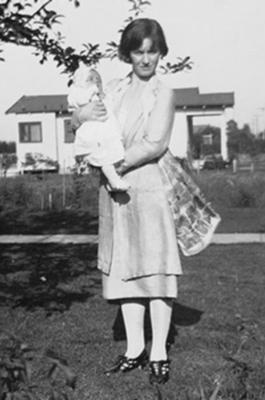
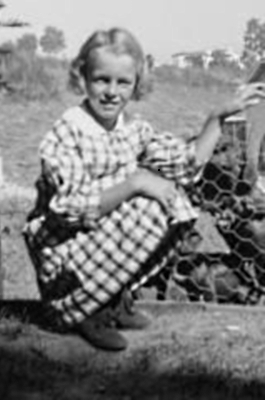
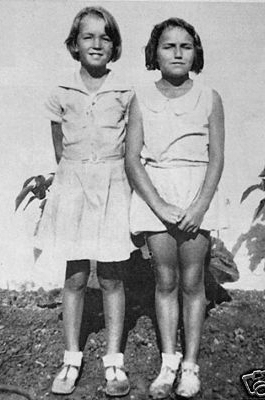
Grace had difficulty supporting herself and Norma even before Doc arrived with Nona, one of his daughters, in tow; so something had to be done. Besides, their bungalow on Odessa Avenue in Van Nuys would not comfortably accommodate four. Doc suggested to Grace that Norma Jeane represented the unnecessary expense; so Grace delivered the frightened, apprehensive nine-year-old into the care and custody of the Los Angeles Orphan’s Home. On September the 13th, Norma was forcibly moved into the red brick house at 815 N. El Centro in Hollywood, where she lived, along with about fifty other orphans, until June of 1937 when Grace removed the eleven-year-old from the orphanage. Grace was finally going to keep her oft repeated promise to Norma: they were going to live together. As they arrived at Grace’s rented bungalow, the radio reported the sudden death of Jean Harlow, transforming what should have been a happy occasion into a sad one. The Baby, as Jean Harlow was known, was only twenty-six years old. Like Jean Harlow’s life, Norma’s life with Grace and Doc did not last very long. In November, Norma’s care was transferred to Grace’s aunt.
Edith Ana Atchinson Lower, Aunt Ana as she was known, was fifty-eight years old when Norma entered the devout Christian Scientist’s household. By all accounts, she was an imposing woman but kind and loving. Aunt Ana, Norma as Marilyn often and confidently said, was the first person who actually understood and loved her; Aunt Ana was the first person she actually loved. But Aunt Ana’s love could not stop Norma’s menstrual periods, which began in September of 1938, from being incredibly painful and for which, because of her religious beliefs, Aunt Ana would not allow medication to be taken, not to mention any other type of medical intervention. Norma must have thought she was receiving yet another form of punishment. Painful menstruation would afflict her all of her life and develop into acute gynecological problems. Norma also suffered from endometriosis, for which she would require occasional surgery later in life, surgeries that were often falsely rumored to be abortions. It is often reported that Marilyn submitted to many abortions. But according to Dr. Leon Krohn, her gynecologist, Marilyn never had even one abortion: And the rumors of her multiple abortions are ridiculous. She never had even one. Later there were two miscarriages and an ectopic pregnancy requiring emergency termination, but no abortion (Spoto 146).
Near the end of 1938, newly wedded Berniece Miracle (née Baker), then living in Kentucky with her new husband, Paris, received a letter from her mother. Nineteen years old at the time, Berniece long believed that her mother was dead. The letter from Gladys Mortensen, mailed from Agnews State Asylum in San Jose, California, revealed not only that Berniece’s mother was alive and institutionalized but that Berniece also had a twelve-year-old sister, Norma Jeane, then living in California. Gladys included the addresses of Grace Goddard, Norma Jeane and Gladys’ aunt, Dora. From Berniece’s memoir: Mother wrote that she had been hospitalized for about six years. Most of the letter was filled with begging me to help her get out. She also gave me the address of Della’s sister, Dora Hogan Graham, who lived in Portland, Oregon. Mother hoped that her Aunt Dora could help her get out.
Berniece wrote to Grace first and then to her sister: in my letter to Norma Jeane, I sent a snapshot, and right away she wrote back and sent me one of herself. This initial exchange of letters began their relationship, one that endured for twenty-four years and was extremely important to each young woman. After writing to Aunt Dora, Berniece wrote to her mother and informed her that she had written the others and that I would try to get her out of the institution. I told her I was ecstatic to learn that I had a little sister (Miracle 18-21).
For the better part of two years, Norma lived with Aunt Ana, corresponded with Berniece and attended school at Emerson Junior High, where she earned average grades. Remembered as a withdrawn, laconic student, she was so quiet, in fact, she earned the nickname of The Mouse; and she was so skinny she earned a second moniker: Norma Jeane String Bean. But 1939 was a year of major change for Norma Jeane. Not only would she learn about her half-sister, but on her 13th birthday, Grace took her to visit Gladys.
Withdrawn but obviously well cared for, Gladys spoke not a word until her visitors prepared to leave. With a sad expression on her face, Gladys looked at Norma and said: You use to have such tiny little feet (Spoto 62). Unspoken it may have been but the child who once had tiny little feet must have known, right then and there, that a life of any kind with her mother would remain a dream, and she must have been heartbroken.
Through the end of 1939 and early 1940, Norma continued to live with Ana Lower as her body began to change: her hips broadened and breasts appeared. This transformation continued throughout the spring and with the advent of her fourteenth birthday, she later remarked, a world from which she had previously felt excluded suddenly opened for her, suddenly became friendly; boys whistled and horns honked; she became a feminine force. The other girls noticed. Near this time she earned her third sobriquet: The Mmmm Girl. Just the mention of her name brought a smile to a boy’s face while he intoned Mmmm! Even though her walks to and from school were long, she reveled in the way several attendant boys, who invariably followed her, argued over which one would tote her books. During the summer of 1940, she spent a considerable amount of time at several drive-ins for teens where she quickly became the center of attention.
At the Hi-Ho drive-in, she met her first boyfriend, Chuck Moran, a freckle-faced, red-headed youngster with a propensity for borrowing cars, without permission, and using them for chauffeuring girls to dates or the beach. He and Norma Jeane dated throughout that summer until Chuck, and Norma as well, returned to school in September. She returned to Emerson for the ninth grade while he headed to University High School for the tenth. Aunt Ana developed some health issues near the year’s end, forcing Norma back into the household of Grace and Doc. At that time, another of Doc’s daughter, Bebe, was living with the Goddards. Bebe was the same age, same height and size, even had the same hair color as Norma. The girls became fast friends and they shared almost everything. During that winter, Bebe recounted the truly terrible conditions of her childhood, her sociopathic mother, life in twelve foster homes while caring for two younger siblings, and until 1940, the indifference of her father. Norma Jeane was deeply moved by Bebe’s compelling story and according to several biographers, she even borrowed a few details from it to color her own sad childhood story later in her adult life.
